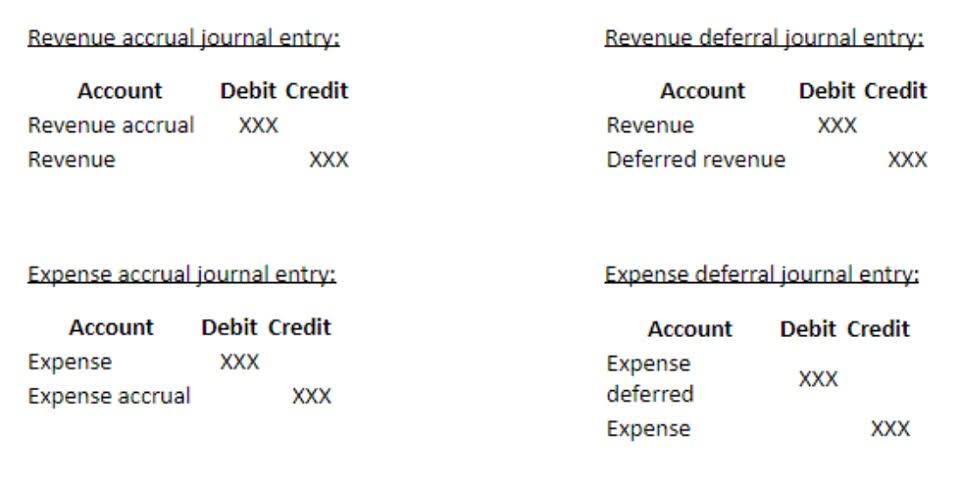
Accounts receivable, on the other hand, is money that a company is owed for revenue that it has already recognized. Someone on our team will connect you with a financial professional in our network holding the correct designation and expertise. At Finance Strategists, we partner with financial experts to ensure the accuracy of our financial content. This will result in overstating assets (because more has been earned) and understating liabilities/stockholders’ equity (since less is owed). BDO USA, P.C., a Virginia professional corporation, is the U.S. member of BDO International Limited, a UK company limited by guarantee, and forms part of the international BDO network of independent member firms. This team of experts helps Finance Strategists maintain the highest level of accuracy and professionalism possible.
What is the approximate value of your cash savings and other investments?

All such information is provided solely for convenience purposes only and all users thereof should be guided accordingly. For information pertaining to the registration status of 11 Financial, please contact the state securities regulators for those states in which 11 Financial maintains a registration filing. A copy of 11 Financial’s current written disclosure statement discussing 11 Financial’s business operations, services, and fees is available at the SEC’s investment adviser public information website – or from 11 Financial upon written request.
Choose a Reddit account to continue
Since accrual expenses and revenues exist, investors can easily determine how quickly a company pays off its liabilities or collects on its receivables. Accrued revenue can sometimes create confusion for stakeholders who may not be familiar with accrual accounting concepts. It’s not uncommon for businesses to need to write off accrued revenue if it becomes clear that they won’t be able to bill or collect payment for that work. Accrued revenue can also help companies identify potential issues with cash flow, such as delayed payments or billing errors.
Treasury Publishes Technical Corrections on Proposed CAMT Regulations
On the other hand, if accounts payable and accrued expense fall relative to sales over longer periods of time (quarter-to-quarter), this would indicate that the company can meet its payment terms with suppliers and keep up with its demands for cash from creditors too. If they have an accrual asset (such as accounts receivable), it means there is more likely to be cash waiting on their balance sheet than what actually exists internally. A taxpayer that receives advance payments as defined under Section 451(c) will need to consider whether to use the full inclusion or deferral method for those payments. Further complications can arise if the taxpayer’s contracts span multiple years (e.g., a software license agreement with a term of 48 months) because the final Section 451 regulations provide for a complicated multiyear contract rule to determine the amount of income to be recognized for every tax year. The multiyear contract rule is effective for tax years beginning on or after January 5, 2021. Thus, whether a taxpayer uses the full inclusion or deferral method for advance payments, the rule may cause the amount of income recognized each year to be different than when those advance payment methods were applied for tax years contra asset account beginning before that date.

Accruals are an indicator of liquidity.
In general, changes from the overall cash to accrual method can be complicated and time consuming because they require a thorough review of all income and expense items. Contrary to a common misconception that the Section 481(a) adjustment is a straightforward reversal of the prior year’s accrual to cash adjustment, the taxpayer must evaluate when each item of income or expense meets the tax rules to be recognized under an accrual method. In addition, the Tax Cuts and Jobs Act introduced new Section 451(b), which accelerates the recognition of income for some accrual-method taxpayers and adds a Partnership Accounting layer of complexity to the overall method changes. An important exception to those rules is the small business taxpayer exemption, which allows qualifying taxpayers to use the cash method of accounting. To meet the small business taxpayer exemption, Section 448(c) provides a gross receipts test that is met if a taxpayer has average annual gross receipts not exceeding $25 million adjusted for inflation for the three prior tax years.
Understanding Accrued Income Statement
While there is no actual movement of cash in this scenario, the business has accrued $150 worth of revenue and expenses. For example, a business may have billed their customers $100 on January 15th for services provided in December of last year (accrued revenue). Accruals are created when revenue is earned, or expenses are incurred, but the corresponding cash has not been received or paid yet.

Once a taxpayer changes to its accrual method income recognition methods as part of its cash to accrual method change, it is generally prohibited from making another automatic accounting method change for any of those income recognition methods for five tax years. The recognition principle is closely tied to the accrual accounting method, which is the preferred method according to generally accepted accounting principles (GAAP). This method allows companies to record revenue and expenses when they are earned, regardless of when payment is received. To manage accrued revenue effectively, you should work with solid software that can automate the process of recording accrued revenue, reduce errors, and save time. Regularly reconciling accrued revenue accounts with actual receipts is also essential to identify discrepancies between recorded revenues and cash received.

- This would involve debiting the “accounts receivable” account and crediting the “revenue” account on the income statement.
- Accrued income statement is a crucial part of financial reporting, and it’s essential to understand how it works.
- Accrued income statements are a crucial part of accrual accounting, allowing businesses to accurately reflect their financial situation.
- It’s essential to regularly review your financial statements to ensure accrued income is properly recorded and recognized.
By recognizing revenue that has been earned but not received yet, companies can have a more accurate picture of their financial performance. Accrued revenue also affects the income statement, increasing the company’s revenue and net income. The key steps involved in recording accrued revenue are to debit Accrued Revenue (an asset) and credit Service Revenue (income) when you earn revenue but haven’t billed for it yet. When you invoice the customer, you debit Accounts Receivable and credit Accrued Revenue. Accrual accounting remains an integral part of financial accounting today because it allows businesses to account for all transactions that have yet to take place concerning revenues and expenses alike. This makes using the accrual method indeed tracking performance more difficult since investors must simultaneously look at both types of financial statements to get an accurate picture of how profitable the business is over time (i.e., using GAAP versus non-GAAP measures).
- Accrued revenue can sometimes create confusion for stakeholders who may not be familiar with accrual accounting concepts.
- Accrued income is common in service-based businesses, where services are provided before payment is received.
- In some cases, accrued income may be recognized immediately, even if payment is not expected for several months, like in the consulting firm example mentioned earlier.
- Once a taxpayer changes to its accrual method income recognition methods as part of its cash to accrual method change, it is generally prohibited from making another automatic accounting method change for any of those income recognition methods for five tax years.
- Accruals provide information that will allow investors to track performance more accurately than they would otherwise be able.
- On the other hand, if accounts payable and accrued expense fall relative to sales over longer periods of time (quarter-to-quarter), this would indicate that the company can meet its payment terms with suppliers and keep up with its demands for cash from creditors too.
Accruals
Gathering information and performing the necessary calculations to properly effectuate a UNICAP method change can be time consuming. If a proper UNICAP method change cannot be completed in time, a taxpayer may have to defer both the Section 263A change and the cash to accrual change to a future tax year. Also, it is not uncommon for a taxpayer to be acquired into a consolidated group or for a partnership to have a new partner that is a C corporation and be required to change to an accrual method. In those situations, even though an accrual method is mandated, Form 3115 must be filed to implement the accounting method change.





































